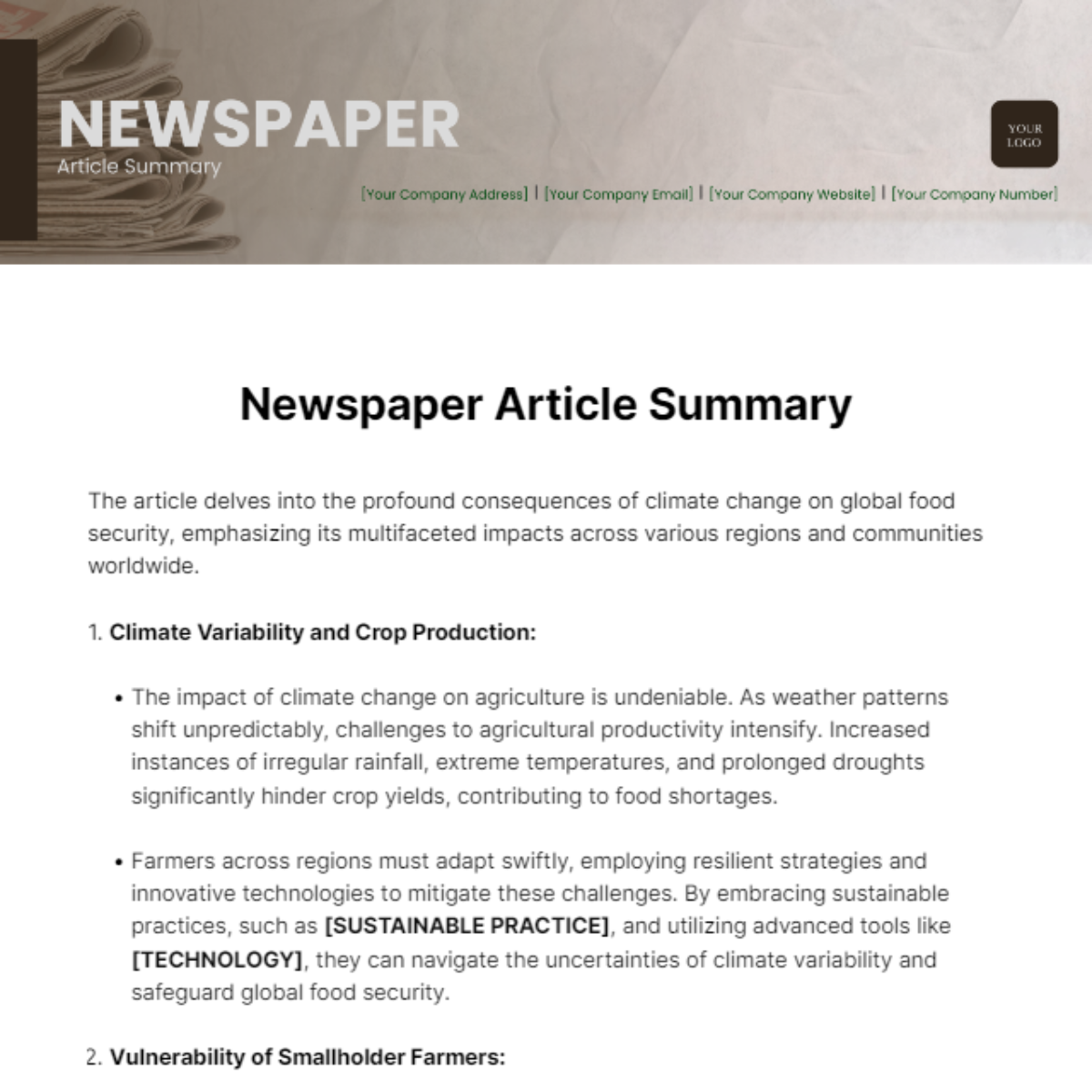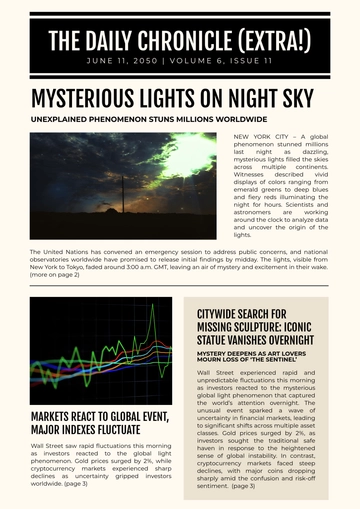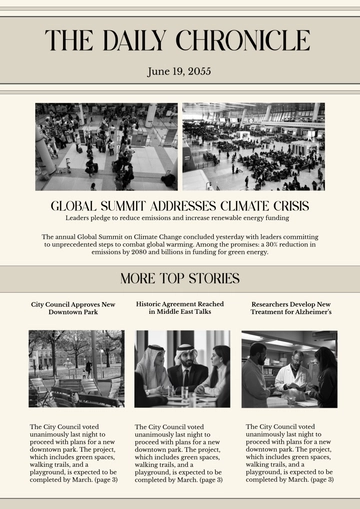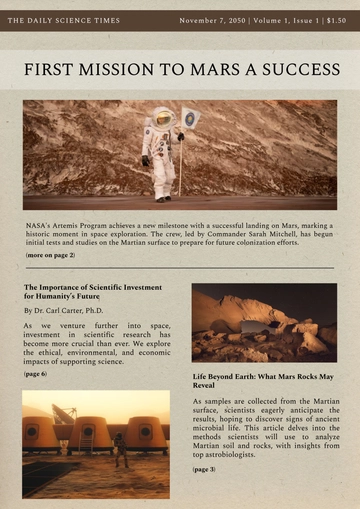Newspaper Article Summary
The article delves into the profound consequences of climate change on global food security, emphasizing its multifaceted impacts across various regions and communities worldwide.
Climate Variability and Crop Production:
The impact of climate change on agriculture is undeniable. As weather patterns shift unpredictably, challenges to agricultural productivity intensify. Increased instances of irregular rainfall, extreme temperatures, and prolonged droughts significantly hinder crop yields, contributing to food shortages.
Farmers across regions must adapt swiftly, employing resilient strategies and innovative technologies to mitigate these challenges. By embracing sustainable practices, such as [SUSTAINABLE PRACTICE], and utilizing advanced tools like [TECHNOLOGY], they can navigate the uncertainties of climate variability and safeguard global food security.
Vulnerability of Smallholder Farmers:
Smallholder farmers, primarily in [LOCATION/COUNTRY], face heightened vulnerability to climate change impacts. Reliant on rain-fed agriculture and constrained by limited resources, these farmers confront disproportionate risks.
Erratic weather patterns disrupt [CROP] planting schedules, amplifying the threat of crop failure and deepening food insecurity in [RURAL COMMUNITY/REGION].
Impact on Food Distribution and Access:
Climate-related disruptions in food production and distribution networks can escalate food prices, rendering nutritious food unaffordable for vulnerable populations.
Impoverished communities, particularly in low-income countries, face heightened challenges in accessing adequate food supplies, exacerbating malnutrition and hunger.
Environmental Degradation and Loss of Biodiversity:
The ominous shadow of [SPECIFIC EVENT/ISSUE] looms large, hastening environmental degradation and biodiversity loss. Examples of environmental degradation, and the dwindling of biodiversity are among the visible scars on our planet's surface, undermining the resilience of agricultural ecosystems.
The ramifications are dire. With each decline in biodiversity, the intricate web of natural pest control mechanisms and genetic diversity crucial for sustainable agriculture weakens. This exacerbates the vulnerability of crops to pests and diseases, escalating the peril of crop failures and exacerbating food insecurity.
Adaptation Strategies and Resilience Building:
Implementing adaptive measures, such as crop diversification, water-efficient irrigation systems, and resilient farming practices, is critical to enhancing food security in the face of climate change.
Strengthening social safety nets, investing in agricultural infrastructure, and promoting sustainable land management practices are essential components of resilience-building efforts.
Global Collaboration and Policy Interventions:
In the battle against climate change and food insecurity, a unified global approach is indispensable. Collaboration among nations, backed by robust policy interventions, is imperative at every level – global, regional, and national.
Key stakeholders, including policymakers, must place paramount importance on [SPECIFIC ACTION/INITIATIVE] strategies. Concurrently, they should allocate resources to promote agricultural innovation and implement [SPECIFIC POLICY] aimed at fortifying food systems against the adverse effects of climate change.
Conclusion:
In conclusion, the article underscores the urgent need for proactive measures to address the nexus between climate change and global food security. By fostering resilience, promoting sustainable agricultural practices, and fostering international cooperation, the world can mitigate the adverse effects of climate change and safeguard food security for present and future generations.
Summarized By: [YOUR NAME]
Summary Templates @ Template.net






























